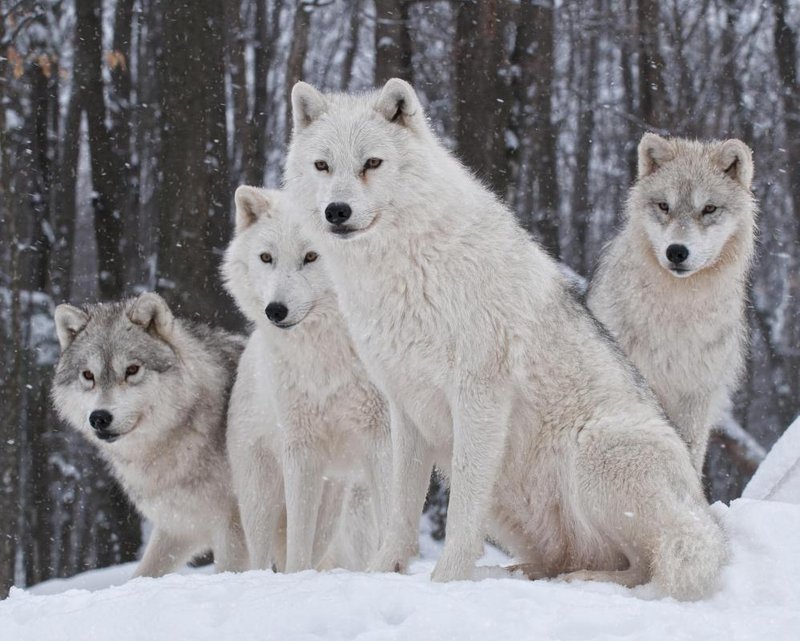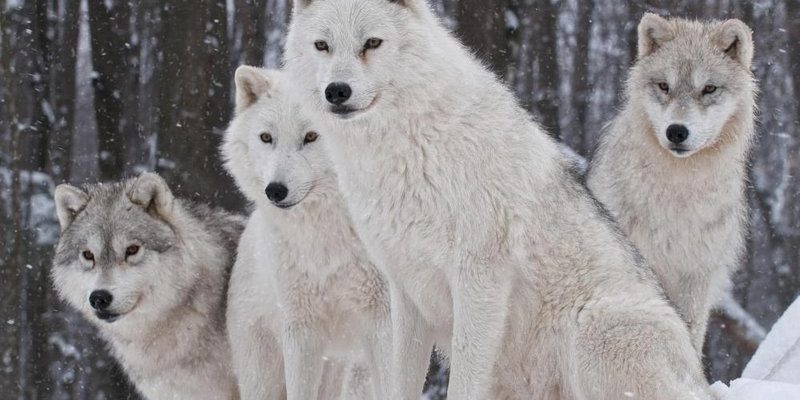
The tundra wolf, a subspecies of the gray wolf, is specially adapted to thrive in harsh, cold climates. They are social animals that often travel in packs, working together for survival in a world that can feel as unforgiving as a snowstorm. But their impact goes far beyond their own survival. By controlling the populations of other animals, they help keep the ecological balance in place. So, how exactly do these wolves influence their environment? Let’s break it down.
Understanding the Tundra Ecosystem
The tundra is a unique biome characterized by its cold temperatures, strong winds, and a short growing season. It’s a place where the ground is often frozen, known as permafrost. Despite these tough conditions, wildlife has adapted to survive here. The vegetation includes hardy plants like moss, lichens, and low shrubs that only flourish for a brief period when the weather permits.
One of the most fascinating aspects of the tundra is its food web. It consists of various producers, like those tough plants, and consumers, including herbivores like caribou and lemmings. These herbivores play a vital role in the ecosystem by feeding on the vegetation. But without the tundra wolf, the balance could tip dramatically, leading to overpopulation of these herbivores, which could ultimately harm plant life.
In a nutshell, the tundra is like a delicate balancing act. Every creature has its role, and the tundra wolf helps ensure that this balance stays in check. By keeping numbers down in some species, they allow the ecosystem to thrive as nature intended.
The Tundra Wolf’s Role as a Predator
Predators are essential for maintaining healthy ecosystems, and the tundra wolf excels in this role. As top predators, they primarily hunt large herbivores like caribou. When they prey on these animals, they’re not just filling their bellies—they’re also helping to regulate the populations of these species.
You might be wondering how this works. Think of it like weeding a garden. If the plants (or herbivores, in this case) are allowed to grow without restraint, they can overtake the environment. This can lead to overgrazing, which damages the plant life and disrupts the overall health of the ecosystem. By hunting efficiently, tundra wolves help keep these populations in check, allowing the vegetation to flourish.
Plus, their hunting patterns have broader implications beyond just population control. For example, when wolves take down a caribou, it provides food for scavengers like ravens and foxes, turning the hunt into a feast for many. In this way, wolves contribute to a rich tapestry of life in the tundra ecosystem, creating opportunities for various animal species.
Impact on Biodiversity
Biodiversity refers to the variety of life forms in an ecosystem. The tundra wolf plays a pivotal role in supporting this diversity. By controlling herbivore populations, they indirectly encourage a rich array of plant species to thrive. This abundance of flora provides habitats and food for various insects and smaller animals, enhancing the overall diversity within the ecosystem.
An ecosystem rich in biodiversity is more resilient. It can better withstand environmental changes, diseases, and other pressures. So, when tundra wolves fulfill their roles as predators, they help maintain that sturdy backbone of biodiversity. A healthy ecosystem is like a well-oiled machine, each part relying on the others to function smoothly.
And let’s not forget about the connections beyond the food web. The tundra wolf also influences other predator species. For instance, when they manage the populations of larger herbivores, smaller predators like foxes or birds of prey can find more success in hunting smaller animals. This interconnectedness shows how the presence of one species can ripple through the entire ecosystem, affecting many other life forms.
Pack Behavior and Social Structure
Tundra wolves are social creatures and typically live in packs. These packs are more than just a group of wolves; they represent a complex social structure that plays a vital role in their survival. Within a pack, wolves have defined roles, which help them work together during hunts and protect their territory.
The pack’s collective hunting strategy is key to their success in such a challenging environment. When they coordinate their efforts, they can take down larger prey more efficiently. This teamwork is vital not only for feeding the group but also for teaching younger wolves the necessary skills for hunting and survival.
Additionally, the social structure of the pack contributes to nurturing and raising pups. The entire pack often helps care for the young, ensuring that the next generation is prepared to face the harsh realities of life in the tundra. This social dynamic strengthens their role in the ecosystem, as a healthy pack is essential for maintaining the population of these incredible predators.
Challenges Facing the Tundra Wolf
Despite their impressive adaptations, tundra wolves face several challenges in today’s world. Climate change is one of the biggest threats, altering their habitat and the availability of their prey. Melting permafrost and shifting ecosystems can destabilize their hunting grounds, making life increasingly difficult for these wolves.
Human activities also play a role in their struggles. From hunting to habitat encroachment, these factors can significantly impact the tundra wolf population. When human development encroaches on their territory, wolves can find themselves squeezed out of essential habitats or struggling to find food.
Conservation efforts are crucial for protecting these majestic animals. By understanding their role in the ecosystem, we can advocate for measures that ensure their survival. Supporting wildlife preservation organizations and promoting sustainable practices can help safeguard the tundra wolf and its delicate environment.
The tundra wolf is much more than just a predator in a frigid landscape; it’s a cornerstone of a complex and delicate ecosystem. By maintaining herbivore populations, promoting biodiversity, and fostering social structures, these incredible animals play an essential role in their environment. Their ability to adapt and thrive in harsh conditions is a testament to the resilience of nature.
As we face growing environmental challenges, understanding the importance of the tundra wolf can guide conservation efforts. Protecting these creatures ensures that the entire tundra ecosystem remains balanced and vibrant. So, the next time you think about the tundra, remember the vital role played by the tundra wolf—the ultimate team player in a world of icy wonder.

